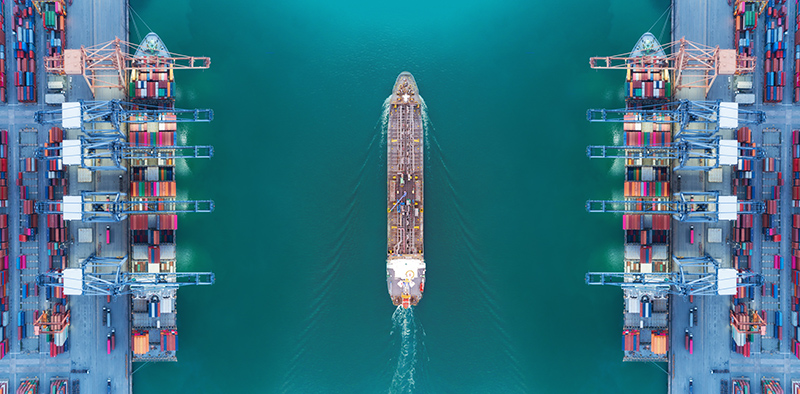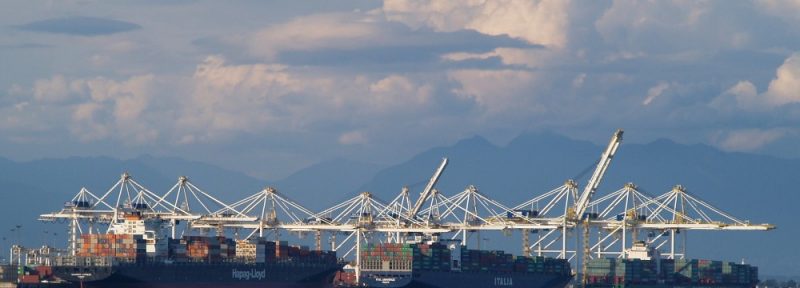How Hydrogen Can Power the Transition to Zero-Emission Shipping
Credit: Pawinee
In the coming days, the federal government is expected to launch a comprehensive national hydrogen strategy. It has the potential to put Canada on a trajectory for world leadership in the clean energy market. At the same time, Canada recently tabled the Canadian Net-Zero Emissions Climate Accountability Act, which legislates national emission reduction targets for the next thirty years. Together, these developments promise to transform multiple sectors and industries. One of the industries with the greatest growth and emissions-reduction potential—but which has yet to be addressed explicitly in government policy—is shipping.
The shipping industry accounts for 80% of world trade and more than one billion tons of greenhouse-gas emissions per year—more than any but the top-five emitting countries. These emissions are set to grow by 50% by 2050 compared to 2018 levels. With high technology costs and long-term fixed assets, the shipping sector faces some large hurdles as it moves towards decarbonization. But the wide-scale adoption of hydrogen fuel-cell technology, which produces only water and heat as emissions, holds great promise for helping the shipping sector achieve net-zero emissions by 2050.
To reach the legislated climate targets, hydrogen powered ships will need to be sailing in Canadian waters within the next 10 years. This means that the shipping industry will need to develop new technologies, fuels and infrastructure at a pace not seen since the Second World War. While the goal is ambitious, other countries are already investing in this transformation. Canada has the potential to be a leader among them and capture part of this burgeoning market.
According to the International Energy Agency, industrial ports are the “nerve centres” for scaling up hydrogen supply chains and driving economy-wide emission reductions. Hydrogen powered ferries, tugs and fishing vessels have also been identified as focus areas in building domestic hydrogen demand. Building a modern, decarbonized domestic fleet will create growth opportunities and expertise in Canada’s shipbuilding sector, benefiting workers and companies throughout the country.
The uptake of pilot and demonstration projects is a vital step in pushing the transition to zero-emission fuels for the maritime industry. The European Union and countries such as Germany and Korea have already earmarked billions of dollars for developing domestic hydrogen supply chains as part of their post-pandemic recovery plans. In Norway and other northern European countries, large-scale demonstration projects, procurement policies, and regulated emission-free zones are supporting development and uptake of this critical new technology.
Hydrogen-powered fleets and infrastructure projects are already coming online elsewhere in the world. Norwegian municipalities have a plan in place to purchase hydrogen-powered vessels by 2022. Ulstein, a Norway-based shipbuilder, is working on a project that will use hydrogen vessels to install offshore wind farms. Belgium already has a hydrogen-powered passenger ferry, and the company that developed it, CMB, has plans to create an additional ferry in Japan, as well as a hydrogen-powered tugboat in the port of Antwerp. Spain and England are looking at ways to integrate hydrogen power directly into port infrastructure, including cargo handling for container ships.
Closer to home, Golden Gate Zero Emission Marine is building North America’s first zero-emission hydrogen powered passenger ferry, and last month, North Vancouver-based Capilano Maritime Design Limited announced that it had initiated the approval process to construct a compressed hydrogen ship. In Charlottetown, Redrock Power Systems is undertaking a feasibility study to run a hydrogen ferry on Lake Ontario. And in northern BC, Metlakatla First Nation is seeking proposals for a feasibility study for an electric, hybrid or hydrogen-powered ferry.
Completing these projects is a vital step towards demonstrating the viability of zero emission technologies in terms of safety, environmental impact and economic costs. But more needs to be done more quickly, and at a larger scale. This will require direction and investment at the federal level.
The average lifespan of a ship is 30 to 50 years. Decisions made today will affect our ability to reach net-zero emissions by 2050 and mitigate the worst impacts of climate change. The government should lead by example and use its procurement policy to test hydrogen technology. The MV Holiday Island and the MS Madeleine are two federally funded ferries that need to be replaced. BC Ferries’ historic $4 billion capital plan to replace 19 ferries over the next 12 years is another obvious avenue for the federal government to provide meaningful support to ensure that Canada has one of cleanest ferry companies in North America. Missing the opportunity to move the dial on hydrogen powered ferries and tugs in Canada will ultimately make it harder for Canada to achieve its 2050 climate targets.
The current trend towards adopting liquefied natural gas (LNG) technology will not deliver the emission reductions required to meet Canada’s climate targets, and continuing investments in LNG infrastructure will make it harder to transition to zero-emission fuels in the future. Investments should focus on technologies that will deliver the reductions needed to achieve our targets and set us up for future clean fuel markets. Our ability to supply international hydrogen markets like Japan and Germany also will depend in large part on our ability to build hydrogen supply and demand at home.
Canadian hydrogen companies like Ballard and Hydrogenics are already at the centre of the global transition to clean shipping. It is time for Canada to make a significant investment in the knowledge and infrastructure to decarbonize domestic shipping, building local supply chains for low-cost green hydrogen at home. Governments have an important role to play in helping launch this important sector at home by removing regulatory obstacles and supporting first-movers. Canada’s economic future will ultimately depend on our ability to adopt new innovative technologies in step with global economies. Canada’s goal of net zero emissions by 2050 will depend on implementing aggressive plans to decarbonize across all sectors, including shipping.





